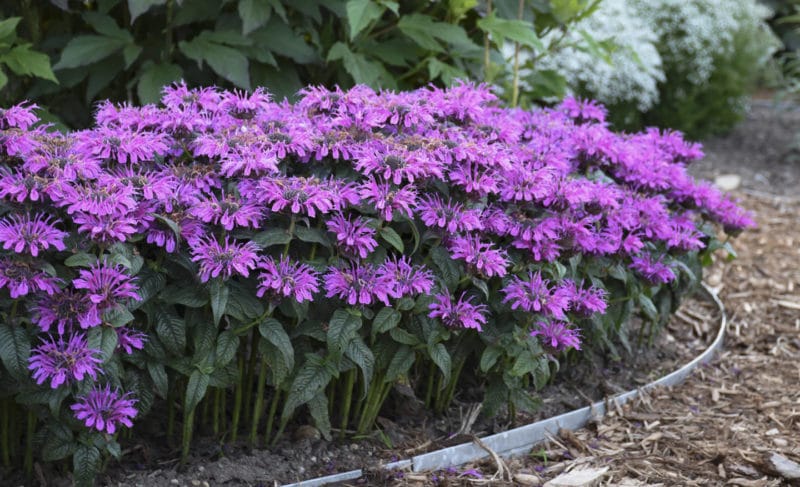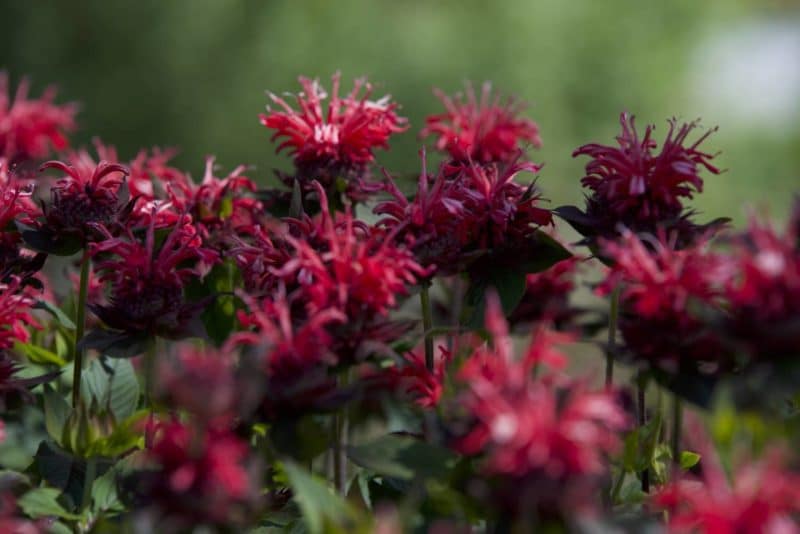
Make Way for Monarda
Last month, we discussed the Year of the Sunflower with industry members. This month, we reached out to experts at Walters Gardens and Dümmen Orange to find out what’s been happening behind the scenes in monarda breeding and how growers can take advantage of the trending category in 2021 and beyond.
Jasmina Dolce, GPN: The National Garden Bureau has declared 2021 the Year of the Monarda. The organization always selects plant categories that are trending and reflect a need in the marketplace. Why do you think the monarda category was chosen for 2021?
Hans Hansen, director of new plant development, Walters Gardens: I think the surge in popularity of monarda is a reflection of the increased selection lending to their versatility. During the last 15 years we have seen increased diversity in cultivars with regards to plant heights, flower color, bloom time and mildew resistance. Monardas are pollinator friendly, which has led to their popularity, and they are native to North America — endearing them to gardeners. New compact varieties display well in containers, making them more attractive at nurseries at the point of sale. Some varieties also have burgundy or purple cast to new foliage and floral bracts that lends to their impulse appeal at garden centers even before flowering.

Zoltan Kovacs, perennials product manager, Dümmen Orange: Monarda is one of the best summer perennials for full sun gardens with very wide landscape usage throughout the U.S. Plants attract bees and hummingbirds with very vibrant colors and scent in the garden. Established plants are super drought tolerant and strong garden performers all summer.
Regina Coronado, Basewell and perennials product specialist, Dümmen Orange: Monarda was used as a medicinal plant by the Native Americans and many people know this plant as being medicinal. Monarda is also a great summer plant that attracts pollinators: bees, butterflies and hummingbirds.
GPN: How long has your organization been involved in the development of monarda varieties, and what has been your role in the development, marketing, and/or sale of monarda?
Hans Hansen: I have been working with monardas at Walters Gardens since 2009. I have brought in as many species as possible, and received germplasm from a network of friends that I collaborate with. Using species that other breeders had not concentrated on brought diversity to our monarda lineup. In addition to combining genes from as many different and useful traits as possible, we do extensive inground and container trials for disease resistance, vigor, garden value, and ease of nursery production.
Zoltan Kovacs: Dümmen Orange has been involved in new monarda development since 2016. We are developing new varieties with more compact habit, which can be used for smaller landscape areas as well. Newly developed compact varieties have also better foliage and flower colors, which thrives in retail stores.
GPN: What are your personal favorite attributes of monarda? Any favorite varieties?

Hans Hansen: My personal favorite traits in monarda are attractive new growth in the spring, contrasting floral bracts, their ability to attract bees and butterflies, and their tie to the American prairie. My personal favorite is monarda ‘Electric Neon Pink’, a breeding breakthrough with its height, intense flower color and mildew resistance.
Regina Coronado: It blooms all summer, attracts pollinators and is deer resistant. The leaves have a special scent. With bright flowers, monarda provides great accent to combination planters or in the garden. Some of my favorites: Pocahontas, ‘Pardon my Purple’, ‘Pardon My Cerise’.
Zoltan Kovacs: Monarda is an excellent garden focal point. They are perfect summer perennials with strong scent. Unusual flower forms makes monarda stand out in the garden. Two of the best monarda series are Pocahontas, a super compact series; and Balmy, a medium compact series.
GPN: What changes and innovations have you seen over the years within the monarda category?
Hans Hansen: An increased selection in cultivars with applications to the middle and front of the garden border (Sugarbuzz series, Pardon My series). Historically, gardeners have had cultivars like ‘Jacob Cline’, a very tall variety best suited to the back of the border. The more refined habits of new selections lend themselves to areas where the detail of the flowers and interaction with pollinators can be more closely observed. With the addition of using Monarda bradburiana genes, the Leading Lady Series has greater mildew resistance than traditional cultivars, and an earlier bloom time. Monarda bradburiana also passes on the trait of dark dots on the flower petals, an attractive detail to add interest.
Zoltan Kovacs: More compact varieties have been developed. Better mildew tolerance. And less vernalization is required to flower new varieties.
Regina Coronado: More compact plants, therefore height control is seldom necessary. Better branching. More powdery mildew tolerance. More even blooming within the series. The new series don’t lose the lower foliage like the older genetics did.
GPN: How can growers and retailers capitalize on the monarda category?
Hans Hansen: Walters Gardens offers a nice selection of compact and mid-height cultivars in two different input sizes for growers to choose from. They are best potted up the season before, finished and vernalized and then shipped or displayed in garden centers just prior to flowering.
Zoltan Kovacs: Offer monarda as a summer perennial in different container sizes all summer. Focus on attributes of monarda: scent, performance, great landscape usage, bee and hummingbird friendly pollinator plants.
GPN: Does monarda present any challenges for growers or retailers?
Regina Coronado: Monarda needs good care at all levels since it cannot wilt but also likes well-drained soil. It cannot be grown crowded in the nursery or in the landscape — it requires good air circulation. Absolutely full sun for growing.
Hans Hansen: Lack of air circulation or very close spacing during the production phase can lead to Botrytis, dropping of bottom leaves and mildew.
Zoltan Kovacs: Monarda can be challenging to grow because of the space usage in the greenhouse and disease issues. Plants need to be grown outdoors in full sun with good spacing, heavy feed and more regular irrigation in containers. Plants can’t be crowded in production in order to grow a florist-quality product for retail. Poor quality will not sell, which is challenging for retailers. Good crop will sell! It comes down to growing the perfect crop with attention to detail!
GPN: Is there anything in the pipeline in the monarda category that you can share?
Hans Hansen: Walters Gardens has had an extensive focus on monarda breeding in the past, and we continue to evaluate underutilized species and crosses for garden value, performance, and uses. Mildew resistance and an increased diversity in flower color continue to be a focus. We are getting ready to launch a new mid-height series in the Proven Winners program that promises to have consumer appeal.
Zoltan Kovacs: Dümmen Orange will continue developing more compact, better disease-resistant varieties with very strong retail colors, excellent landscape performance.
Jasmina Dolce is managing editor of GPN magazine. She can be reached at jdolce@greatamericanpublish.com.


 Video Library
Video Library 




















